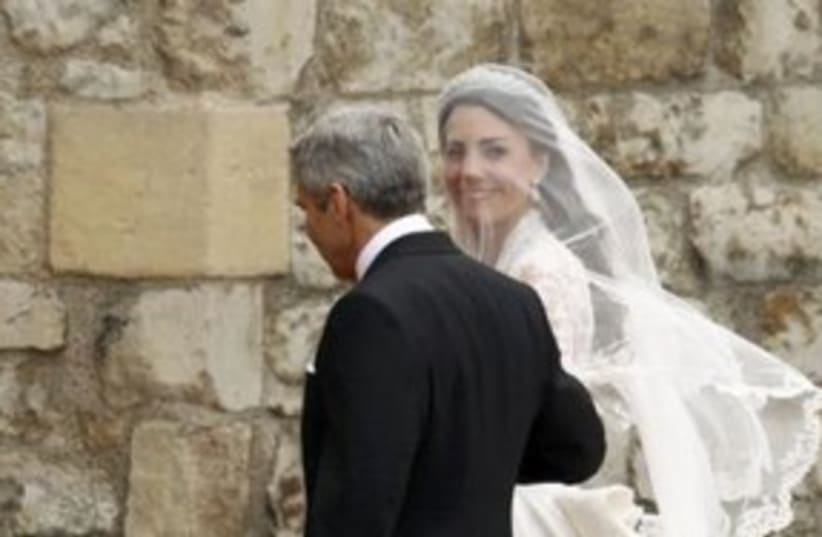RELATED:Kate Middleton set to eclipse Diana's celeb statusRoyal wedding fever hits the streets of... Modi’inDespite the controversy that preceded and followed it, Princess Margaret’s Westminster Abbey wedding set the stage for a long royal tradition of televised royal unions, the latest of which occurred one week ago with the marriage of Prince William, now known as Duke of Cambridge, Earl of Strathearn and Baron Carrickfergus, to long-time fiancée Kate Middleton.A total of six royal weddings have been televised since Margaret’s in 1960. Of the weddings involving possible successors to the throne, each has drawn a progressively larger television audience. Princess Anne’s vows to Mark Phillips drew 500 million living room spectators. Seven hundred and fifty million people watched as Prince Charles wed Diana Spencer in 1981. Most recently, an estimated two billion viewers tuned in for the marriage of Prince William to Catherine, now-Duchess of Cambridge.The technology bringing these joyous royal affairs into living rooms worldwide has also progressed and advanced through the years. While Margaret’s 1960 wedding was shared with the world via antiquated black-and-white analogue broadcast technology, Prince William’s vows were transmitted in digital high definition color as well as broadcast live over the Internet through YouTube.Already in the time of Princess Margaret and more than ever today, the televised pomp and circumstance of royal weddings has been used to sustain public endearment despite the largely-symbolic and waning relevance of royalty in the modern age of democratic rule. While still the constitutional monarchy of 16 countries, the House of Windsor is today far better known for its televised weddings, divorces and funerals than the power it wielded in the days when its kings and queens ruled over an empire on which the sun never set. Through such endearing moments as the weddings of Margaret and William, television has allowed an institution that many say is in its last throes to hold onto its prestige as well as the captive curiosity of billions worldwide.
This Week in History: The first televised royal wedding
300 million people worldwide watched as Princess Margaret was wed in 1960; televised weddings sustain public endearment for royalty.

RELATED:Kate Middleton set to eclipse Diana's celeb statusRoyal wedding fever hits the streets of... Modi’inDespite the controversy that preceded and followed it, Princess Margaret’s Westminster Abbey wedding set the stage for a long royal tradition of televised royal unions, the latest of which occurred one week ago with the marriage of Prince William, now known as Duke of Cambridge, Earl of Strathearn and Baron Carrickfergus, to long-time fiancée Kate Middleton.A total of six royal weddings have been televised since Margaret’s in 1960. Of the weddings involving possible successors to the throne, each has drawn a progressively larger television audience. Princess Anne’s vows to Mark Phillips drew 500 million living room spectators. Seven hundred and fifty million people watched as Prince Charles wed Diana Spencer in 1981. Most recently, an estimated two billion viewers tuned in for the marriage of Prince William to Catherine, now-Duchess of Cambridge.The technology bringing these joyous royal affairs into living rooms worldwide has also progressed and advanced through the years. While Margaret’s 1960 wedding was shared with the world via antiquated black-and-white analogue broadcast technology, Prince William’s vows were transmitted in digital high definition color as well as broadcast live over the Internet through YouTube.Already in the time of Princess Margaret and more than ever today, the televised pomp and circumstance of royal weddings has been used to sustain public endearment despite the largely-symbolic and waning relevance of royalty in the modern age of democratic rule. While still the constitutional monarchy of 16 countries, the House of Windsor is today far better known for its televised weddings, divorces and funerals than the power it wielded in the days when its kings and queens ruled over an empire on which the sun never set. Through such endearing moments as the weddings of Margaret and William, television has allowed an institution that many say is in its last throes to hold onto its prestige as well as the captive curiosity of billions worldwide.